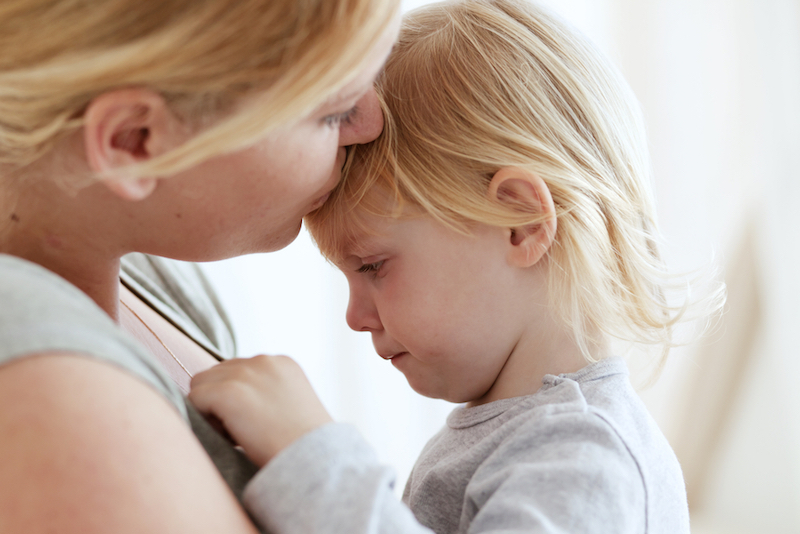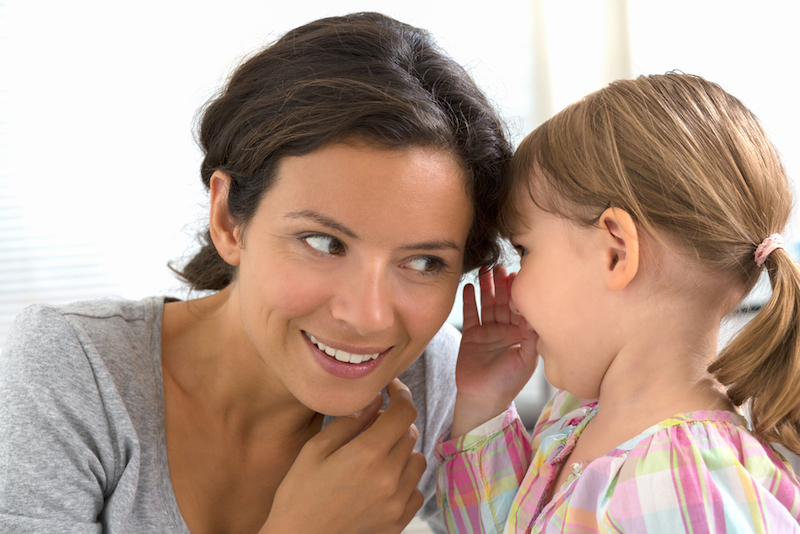8 Tried-and-True Tips for Talking to Preschoolers
Talking with kids

Having a conversation with a preschooler has its moments — some of them amusing and some of them are challenging. Kids who are in the preschool age range tend to say "no" and ask "why?" A lot.
But preschoolers are just learning to communicate verbally and are coming into their own understanding of how the back-and-forth flow of a simple conversation works, said Tovah Klein, director of the Barnard College Center for Toddler Development in New York City. Kids are considered to be preschool-age when they are 3 to 5 years old, according to the U.S. Centers for Disease Control and Prevention, although some experts include 2-year-olds in the preschool category.
One of the common mistakes that parents might make when talking with preschoolers is having expectations that are often too high, Klein said. For example, if parents know that young children are sometimes capable of putting on their shoes, they assume that their little ones are always capable of putting on their shoes.
Another mistake parents make is being very future-oriented in their thinking, so that they may be constantly thinking ahead when they’re communicating with their preschooler. But children live in the here and now, said Klein, who has authored the book "How Toddlers Thrive" (Touchstone, 2014), which is a parenting guide for children ages 2 to 5. [10 Scientific Tips for Raising Happy Kids]
Although parents can think of three things at once, young children are not good at sequencing information and need parents to guide them through the process, Klein said. For example, she said that a parent might say to a 3-year-old, "We need to leave for school. It's time to get your coat."
When parents use this kind of language — clear, simple and direct — kids may understand their parents better, Klein said.
Here are eight other tried-and-true tips for communicating effectively with a preschooler.
Crouch down

Crouching down or sitting down so parents are speaking to preschoolers literally and physically on their level rather than towering over them is helpful, Klein said. It establishes some eye contact and is one way for parents to communicate the idea that "I'm here with you," she explained.
Doing so also helps to get a young child's attention in a positive way, Klein noted.
Label emotions and feelings

Children between ages 2 and 5 are just starting to understand emotions, such as fear, anger, frustration and disappointment, Klein told Live Science.
Labeling those feelings and emotions is a big part of communication with preschoolers, Klein said. For example, a parent might say, "It's disappointing that it's raining outside, and you can't go out to play," she said.
Naming these emotions helps a young child to understand them, Klein said.
Slow down

"Children move at a slower rate," and parents in today's busy world need to remember to slow down to this pace, Klein said. It might take longer than a parent thinks to complete a child's bedtime routine or to go grocery shopping with young kids, so parents should factor in that extra time, she explained.
Parents may often be guilty of trying to accomplish too much in one moment, so slowing down and remembering to exhale is important around young children, Klein recommended. When a child sees that lots of things are going on for a parent, this makes it hard for the child to know if that parent is going to be there for him or her, Klein said.
Give limited choices when asking questions

Giving choices is important for young children who want to feel like they have some control over some situations.But for the preschool set, it's best for parents to give a child a limited choice in the decision-making process, Klein said.
For example, she suggested that a parent might say, "We're getting ready to leave now, do you want to wear your red sneakers or your green ones?" Or, "Do you want to put on your coat first or your hat?"
Giving kids options is a good way to involve them in making simple, everyday decisions about what they are wearing, which book you'll read or what food to eat at snack time, for example, but limiting those options can help parents to keep things moving forward.
Parents should give children their full attention

A parent's distracted attention is hard on a child, Klein said. When children feel like a parent is there for them physically but not truly there mentally, they feel like a parent is not really with them, she said.
"Children don't need their parents’ attention 24/7 and 100 percent of the time," Klein said. It's fine for a parent to be making dinner, for example, but they should also stop to chat with their child if the child needs his or her parent's full attention, she explained. [7 Ways to Short-Circuit Kids' Mobile Addiction]
Use listening sounds and gestures

Children need to know that their parents are listening to them when they are trying to communicate, and that parents aren't just physically present while their minds are occupied by talking on the phone or texting, Klein said.
Young children learn how to communicate by observing the ways their parents communicate with them, Klein told Live Science. Any gestures or sounds that parents use to connect to their child during a conversation — listening, nodding, smiling, saying "uh-huh" and "hmm" — help a child learn how to communicate as well as how to listen, she said.
Parents can use these techniques at key times and not necessarily all of the time, Klein said. This will help kids to feel listened to and respected, she noted.
Model good manners

If parents are role models for good manners, by saying "please" and "thank you" to teachers and salespeople, for example, and demonstrate politeness throughout the day in a genuine way, then young children learn that that's how to treat other people, Klein said.
More than anything, children learn through role modeling and observation, and they are always watching and observing, and absorb this behavior like a sponge, she said.
Avoid overtalking

Although there has been a big push for parents to talk more with their kids, Klein cautions parents not to overtalk with children. For example, if it's dinnertime for the family, just tell children to come to dinner, she advised.
Communication can be carried out in smaller doses with young children, and parents can save the explanations for a time when they are really needed or for when kids are truly curious, she recommended.
Originally published on Live Science.
Sign up for the Live Science daily newsletter now
Get the world’s most fascinating discoveries delivered straight to your inbox.
Cari Nierenberg has been writing about health and wellness topics for online news outlets and print publications for more than two decades. Her work has been published by Live Science, The Washington Post, WebMD, Scientific American, among others. She has a Bachelor of Science degree in nutrition from Cornell University and a Master of Science degree in Nutrition and Communication from Boston University.










